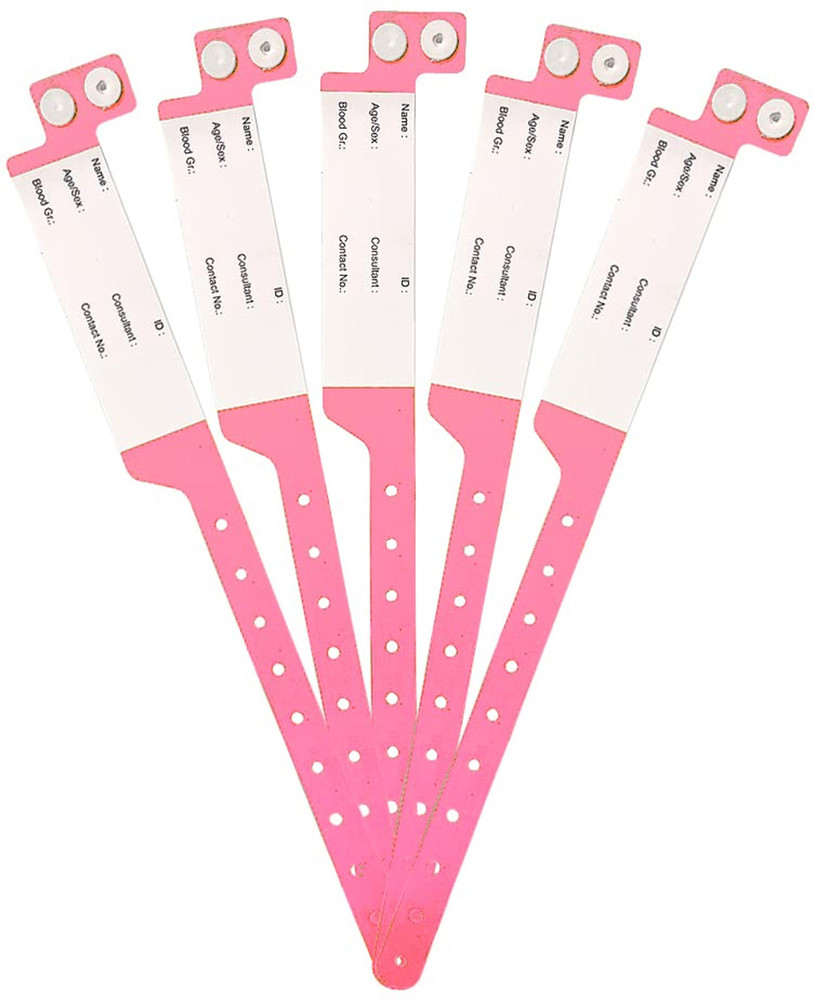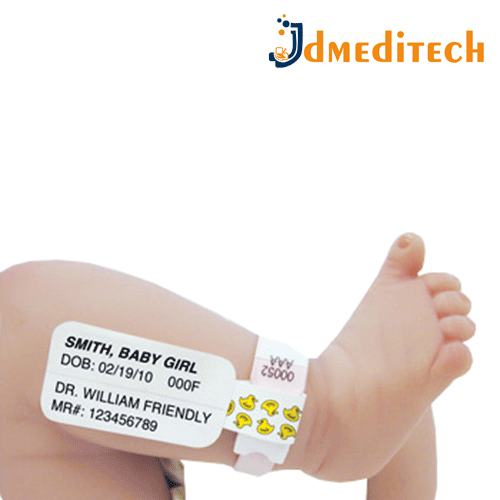Best Practices for Introducing a Patient Identification Band System in Your Clinic
Best Practices for Introducing a Patient Identification Band System in Your Clinic
Blog Article
Just How Patient Identification Band Plays a Critical Duty in Patient Monitoring and Treatment
Patient Identification bands function as an important gear in the intricate equipment of healthcare systems, functioning as a secure versus clinical errors. As the frontline device for validating Patient identification, these bands underpin crucial processes from providing the right medication to guaranteeing the appropriate individual goes through the marked treatment. The extensive effect of such a seemingly easy device on Patient safety and security, experience and outcomes may stun numerous, leaving one to contemplate the prospective innovations and advancements that can additionally improve their performance.

Comprehending the Basics of Patient Identification Bands
Despite the simpleness of their look, Patient Identification bands serve a vital duty in health care setups. These basic wristbands, frequently constructed from plastic or paper, hold a riches of information vital for Patient administration and treatment. They usually present the Patient's complete name, day of birth, and an one-of-a-kind Identification number, offering as the main source of Patient Identification. The bands might additionally present info such as allergies or unique care directions, offering healthcare specialists with instant access to crucial information. The usage of these Identification bands is considered an universal method in health care, aimed at making certain Patient safety and security and precision of treatment distribution. Nevertheless, the efficiency of Patient Identification bands counts heavily on consistent usage and exact information input.
The Role of Patient Identification Bands in Decreasing Medical Errors
An incredible variety of medical errors happen because of Patient misidentification, highlighting the essential duty of Patient Identification bands. These basic, yet important, tools, help health care carriers in properly recognizing clients, therefore lessening the probability of mistakes. These bands, often equipped with barcodes or QR codes, consist of necessary Patient information such as name, age, and case history. This makes sure that the right care is provided to the best Patient at the correct time. In high-stress environments where clinical personnel manage numerous responsibilities, Patient Identification bands function as a trusted and fast referral. Notably, they give a guard against misidentification, reducing find out the risk of wrong medical diagnoses, medicine mistakes, and unnecessary treatments, thus playing an important function in reducing clinical errors.
Enhancing Patient Safety And Security With Identification Bands

The Influence of Patient Identification Bands on Patient Experience
Virtually all clients in medical care settings experience the use of Identification bands during their care trip. These bands, normally worn around the wrist, have an extensive effect on the Patient experience. They serve as a constant, noticeable suggestion of the Patient's identity and clinical conditions, guaranteeing individuals that they are recognized and cared for.
Future Advancements and Technologies in Patient Identification Bands Technology
While existing Patient Identification bands have verified efficient in enhancing care, the perspective of technical developments promises also higher renovations. Emerging technologies, such as radio-frequency Identification (RFID) and Quick Action (QR) codes, offer a new degree of accuracy and efficiency. RFID tags can provide real-time Patient location monitoring, while QR codes can store thorough Patient details easily accessible via smart device scanning. Assimilation of synthetic knowledge can enable automated Patient data evaluation, forecasting possible health risks and enhancing treatment plans. Biocompatible materials are additionally being explored to boost Patient comfort. These advancements not just bolster Patient safety and security however additionally simplify medical care operations. click over here now Thus, future developments in Patient Identification bands hold significant potential in transforming Patient treatment.
Conclusion
Patient Identification bands are an essential possession in medical care, ensuring exact Patient Identification and decreasing clinical mistakes. These devices enhance Patient safety and security, boost confidence in health care systems, and improve Patient experiences and outcomes. With the capacity for future innovations in Identification band modern technology, their duty in Patient management and care is readied to come to be much more important, reinforcing their relevance in the distribution of efficient and risk-free health care.
Exactly How Patient Identification Band Plays an Essential Duty in Patient Monitoring and Treatment
An astonishing number of clinical mistakes occur due to Patient misidentification, underscoring the essential function of Patient Identification bands. patient identification band.Undoubtedly, the use of Patient Identification bands considerably enhances Patient security in healthcare setups. Thus, future innovations in Patient Identification bands hold significant capacity in transforming Patient treatment
Patient Identification bands are an important possession in health care, making certain accurate Patient Identification and minimizing clinical mistakes.
Report this page